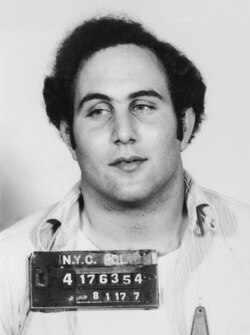The Disturbing Legacy of David Berkowitz

Introduction
David Berkowitz, infamously known as the “Son of Sam,” is one of the most notorious serial killers in American history. His criminal activities in New York City during the summer of 1976 left the nation in shock, and his story remains a significant part of the conversation around criminal psychology and public safety. As the subject of numerous films, books, and documentaries, Berkowitz’s legacy prompts discussions about mental illness, the media’s role in shaping public perception, and the consequences of violent crime.
The Son of Sam Incidents
Berkowitz’s crime spree resulted in the deaths of six individuals and injuries to seven others. He primarily targeted young couples parked in cars, shooting them with a .44 caliber revolver. His first attack took place on July 29, 1976, and continued until his arrest on August 10, 1977. The fear generated by the shootings was exacerbated by Berkowitz’s taunting letters to the police and the media, where he often referenced a demonic dog commanding him to kill.
Capture and Confession
The investigation culminated in a nationwide manhunt, which became one of the most extensive in New York’s history. Berkowitz was apprehended following a tip that led police to his car, finding the same .44 caliber revolver used in the killings. Following his arrest, Berkowitz confessed to the murders, revealing that he was influenced by delusions stemming from his troubled upbringing and mental health issues.
Psychological Analysis
Berkowitz’s case has become a focal point for criminologists and psychiatrists studying the minds of serial killers. His claims of demonic influences and a history of childhood trauma raise significant questions about the intersection of mental health and criminal behavior. Berkowitz underwent psychiatric evaluations and was ultimately diagnosed as a paranoid schizophrenic, which contributed to debates regarding the insanity defense in criminal cases.
Impact and Legacy
Despite his horrific crimes, Berkowitz’s subsequent behavior in prison—where he has claimed to have found religion and sought redemption—has influenced how society views him today. He has become a case study for discussing the potential for rehabilitation in violent offenders. Moreover, his actions prompted changes in police procedures regarding serial investigations and led to increased awareness of mental health issues in the context of criminality.
Conclusion
David Berkowitz remains a chilling symbol of the darker aspects of human nature. His legacy continues to provoke discussions about crime prevention, mental health treatment, and the role of the media in sensationalizing criminal incidents. Understanding the full scope of his actions and their repercussions is crucial for professionals in criminal justice, social services, and mental health fields. As society continues to grapple with the challenges of violent crime, the case of David Berkowitz serves as a stark reminder of the complexities involved in human behavior and criminal justice.









